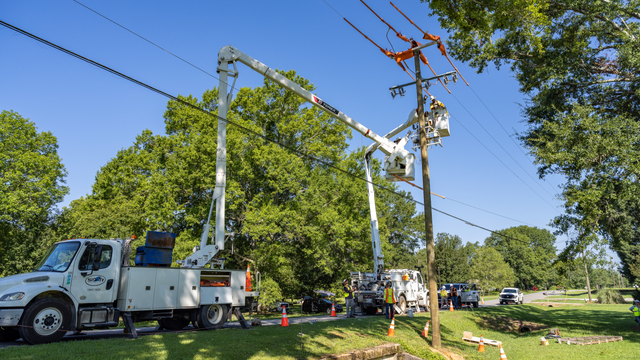The 2020 Strategic Directions: Smart Utilities Report explores the issues and complexities of the changing utility landscape. Based on expansive industry data collected through our annual survey of electric, water, and natural gas utilities, this year’s report looks beyond individual efforts to take a more holistic view of what it means to deliver the promised grid of the future.
After having surveyed more than 600 qualified utility, municipal, commercial and community stakeholders, there’s no doubt that change is afoot. Utilities continue to work to advance into this rapidly modernizing world even as they remain challenged by outdated regulatory and business models.
Although budget constraints, competing priorities and regulatory hurdles remain the top three challenges when it comes to modernization, the data hints that these barriers are now considered less significant than in the past, and steady forward progress proves they are not impossible.
This year’s report dives into these issues – and many more – and provides in-depth analysis by leading industry experts.
2020 Strategic Directions: Smart Utilities Report
The 2020 Strategic Directions: Smart Utilities Report explores the issues and complexities of the changing utility landscape. Based on expansive industry data collected through our annual survey of electric, water, and natural gas utilities, this year’s report looks beyond individual efforts to take a more holistic view of what it means to deliver the promised grid of the future.
Learn More
Communication Networks Are Key to Delivering the Grid of the Future
To truly deliver the grid of the future, utilities will have to do more than simply integrate a lengthy list of shiny new features and technologies. This massive shift towards modernization will require utilities to implement sweeping digitalization, embracing and investing in the organizational transformation and large-scale integrated communications networks that will bring it all together.
Grid Modernization Goes Mainstream; Reliability Is Primary Goal
The move to the digital grid is upon us, propelled by the promise of new technologies, devices and speed. Survey data shows that utilities are “all in” on grid modernization plans, and regulators are slowly moving in that direction. But the key to turning vision into reality comes down to next-level planning to truly enable decentralization.
“Manager of Managers”: Rise of Distributed Devices Drives Call for Network Management Solutions
Increasingly complex and proprietary systems make network management a giant headache for system operators. With more and more devices being installed on these systems, 24/7 network operations centers and security operations centers are rapidly gaining favor; however, end-to-end network management strategies to unify these investments will be critical.
For Utilities, the Road Map to Resilience Must Be Focused, Holistic
Power and water providers are dedicating themselves to rooting out their assets’ biggest vulnerabilities. Today, utilities are not only embracing data, but they’re using it to strengthen assets while making them more cost-efficient and sustainable. Resilience goes a long way toward assuring ratepayers that they can count on their utilities to respond responsibly.
Delivering Resiliency as a Service
The utility model is changing, and the days of utilities being the provider of last resort to all customers are coming to an end. It’s simply not practical to expect utilities to maintain a great expanse of aged infrastructure while restricting their ability to generate ROI. Regulators expect utilities to be forward-thinking while also offering shareholders value. The quickest answer? Resiliency.
United They Stand: DER and Non-Wire Alternatives Are Pulling Utility Teams Together
Utility managers have been wringing their hands about silos for decades. Now, at least when it comes to planning, utilities are starting to break down those silos and operate more cross-functionally. Here’s why: They must if they want to successfully meet the challenge of distributed energy resources (DER) and non- wires alternatives (NWA) to traditional utility resources.
Reliable communications networks are crucial to allow utilities to deliver an uninterrupted supply of power to customers. With high-speed wireless technology at the fore, and the addition of hundreds of new field applications that require communications networks — including Long-Term Evolution (LTE) — a digital utility is built on communications that extend to the edge. Converged networks employing IP-advanced private wireless networks enable these systems to become more efficient and extend deeper into the distribution system, where they’re most needed.
5G Implementation Comes Down to Communication, Collaboration
There’s no doubt that the lure of 5G digitalization is strong. This wave of next-generation connectivity is expected to usher in exciting new opportunities such as wide-scale adoption of the Internet of Things (IoT), along with all its innovative new technologies that promise to change how we live, work and play.
Utilities Must Constantly Be on Offense in Cat-and- Mouse Game Against Hackers
For power suppliers wanting to be vigilant about the threat that hackers pose to the grid, a March 2019 intrusion may have been a benign warning about vulnerability. When hackers disabled a Utah-based renewable energy developer’s control system for about a dozen solar and wind farms in the West, the grid’s operators were left blinded for more than 10 hours to those 500 megawatts of generation sites. Thankfully, no outages resulted.
Key Risk Evaluations of Assets by Utilities Focus on Regulation, Evolving Customer Expectations
With great power comes great responsibility, meaning it falls to utilities to ensure that their transmission and distribution (T&D) assets can — and will — perform at the appropriate reliability and safety levels while continuing to meet regulatory and environmental standards.






